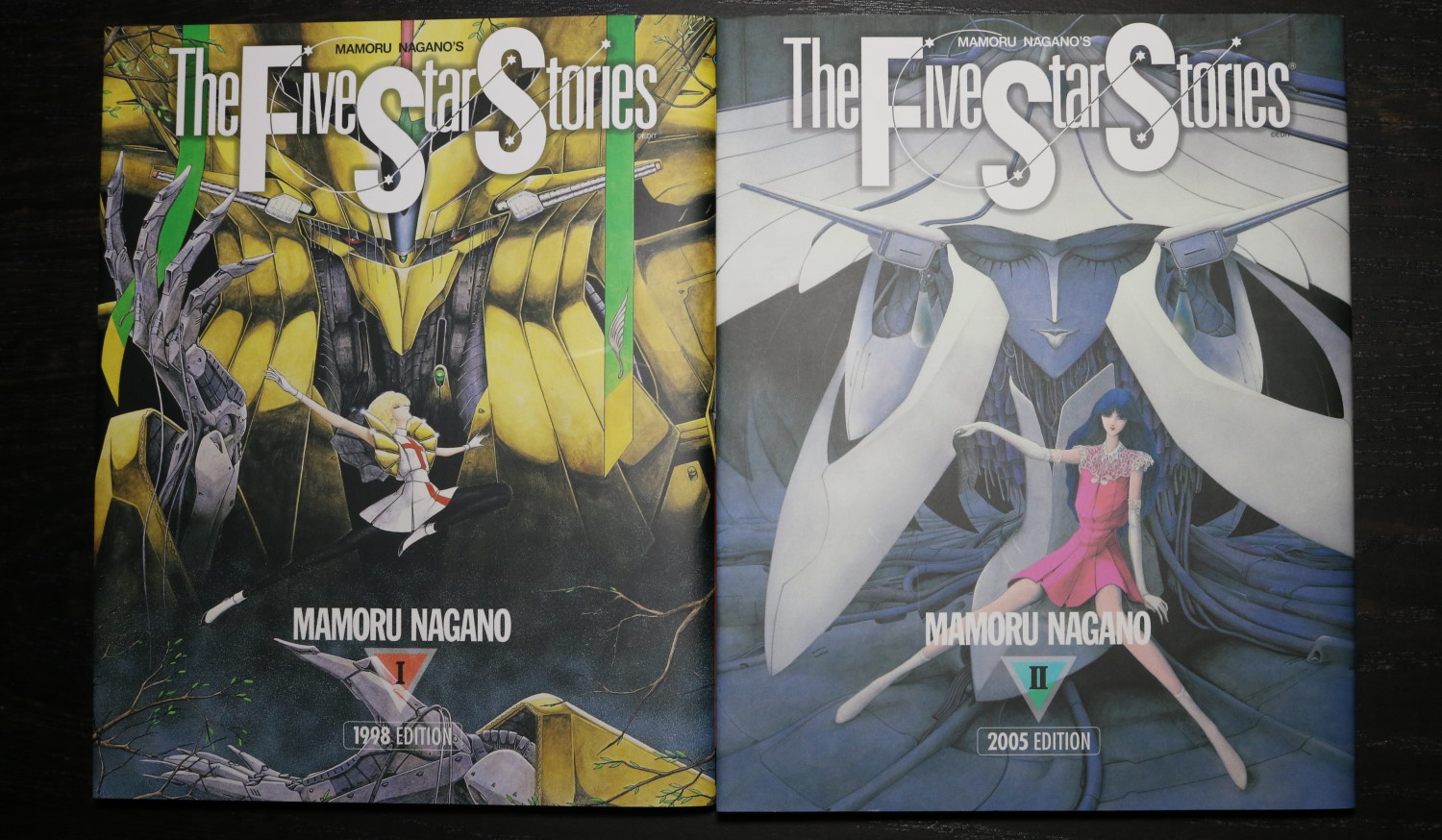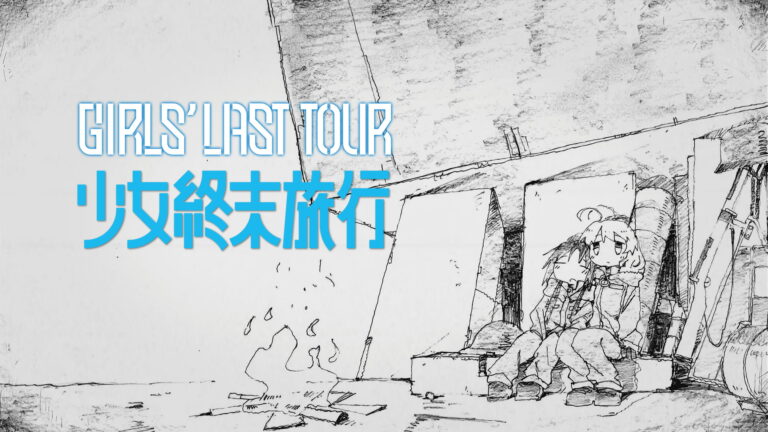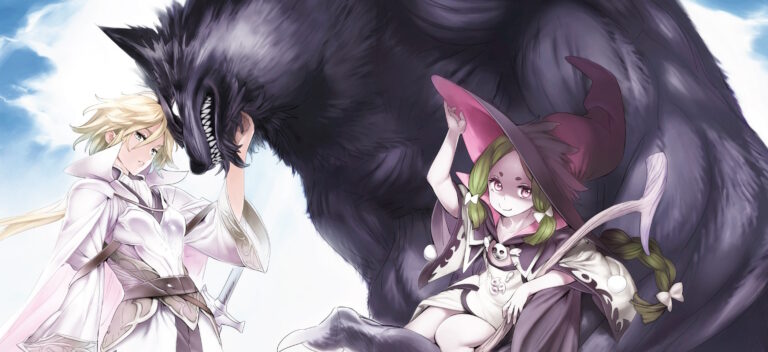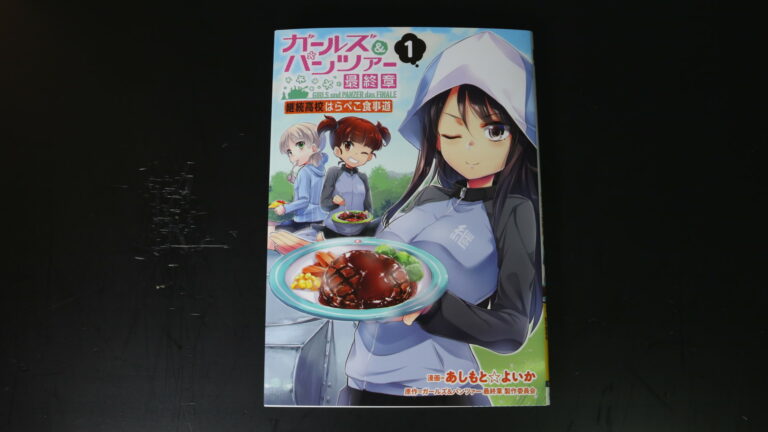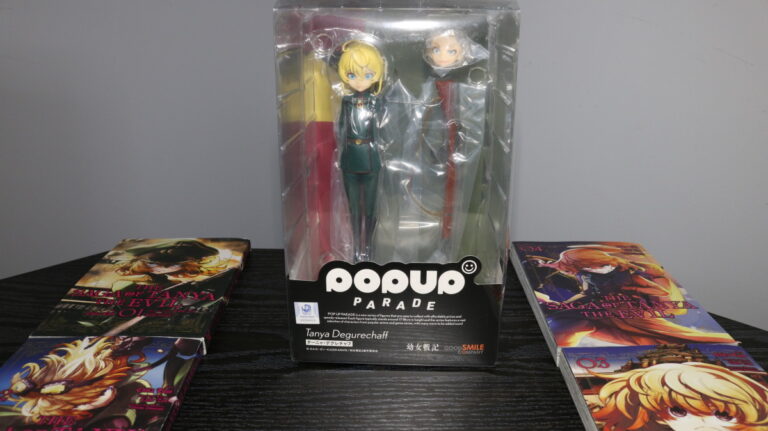F.S.S. : the Five Star Stories
I don’t even know where to begin with this one…. This will be a long time, for sure.
I will start with some facts first. The author is Nagano Mamoru. This manga has been going on since 1986.
Yes, 1986. It is 35+ year project.
Now, this isn’t just some run-of-the-mill manga you see. This one’s different because of the sheer amount of lore the author has placed into this story is something of an art. The author explains virtually everything you see in manga in a form of lore pages.
In some volumes, the lore pages exceed 50+.
The story

The story begins with the end. The first few tens of pages show the last battle of a long war. It tells us that the time is now J.C. 3960.
Then it goes back to the beginning, J.C. 2988. And it begins with Ladios Sopp who ultimately sits in the heart of almost every crucial events in the manga. He is a mortar headd meister. A mortar headd is a semi-sentiment giant robots which requires a fatima (bio-engineered computing human) and a headliner (a hyper human).
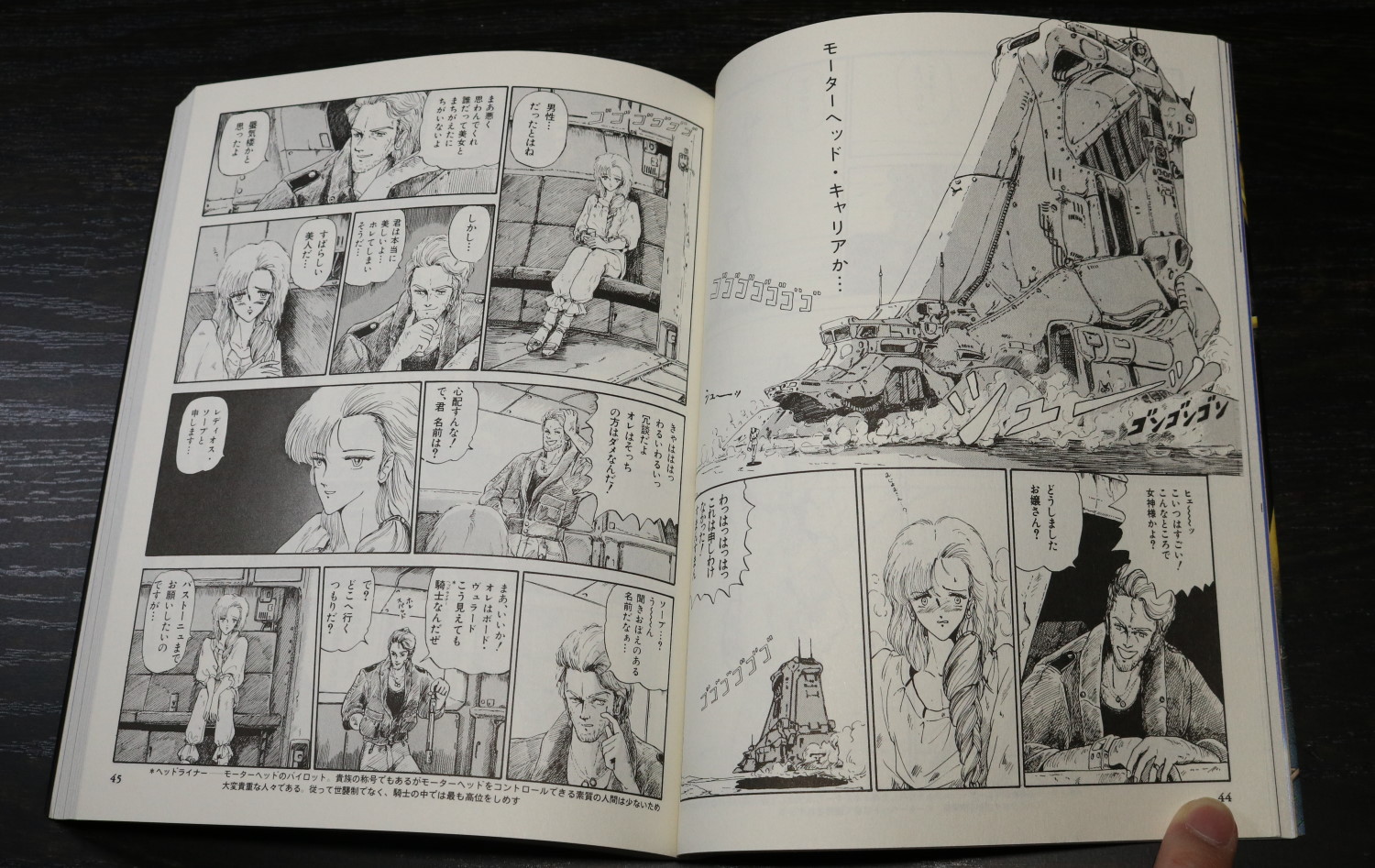
These are basically weapons of mass destruction, and those who can construct them are highly sought after, meaning Sopp can go anywhere he pleases and be expected to treat like a royalty.
On this occasion, he visits Rent, an autonomous district, on the planet Addler to visit a fatima debut party. This is where everything begins.
What F.S.S does is tell tales of … what I can only describe of never-ending circles of despair and a little bit of hope.
Story structure
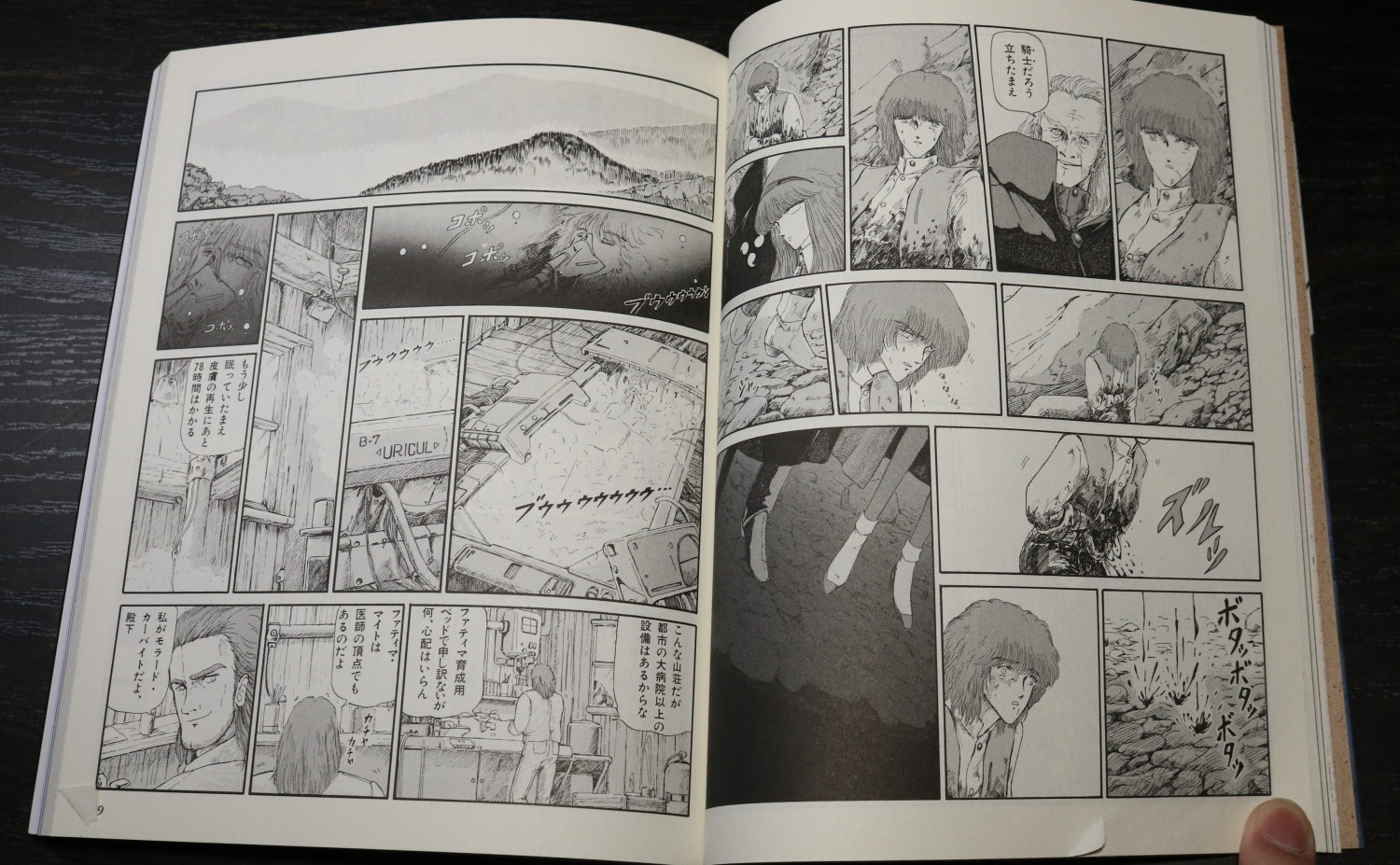
This is pretty important because FSS does not have a normal structure. There is no main character. There IS a central character in Ladios Sopp (and his different forms…), but Sopp is not a main character by any means.
Instead, stories are basically formed in arcs based on time, and each arc features its own main character. And, because of the vast time scale, almost all characters die in one way or another. In fact, very few characters face peaceful demise in this manga. Most are killed.

This chronicle style story telling makes sense for FSS. At the same time, this also means readers must be alert because time jumps back and forth. You must be able to connect dots. If not, you will be totally lost.
You will also not have your favorite character for too long because he or she will die anyway.
Art style
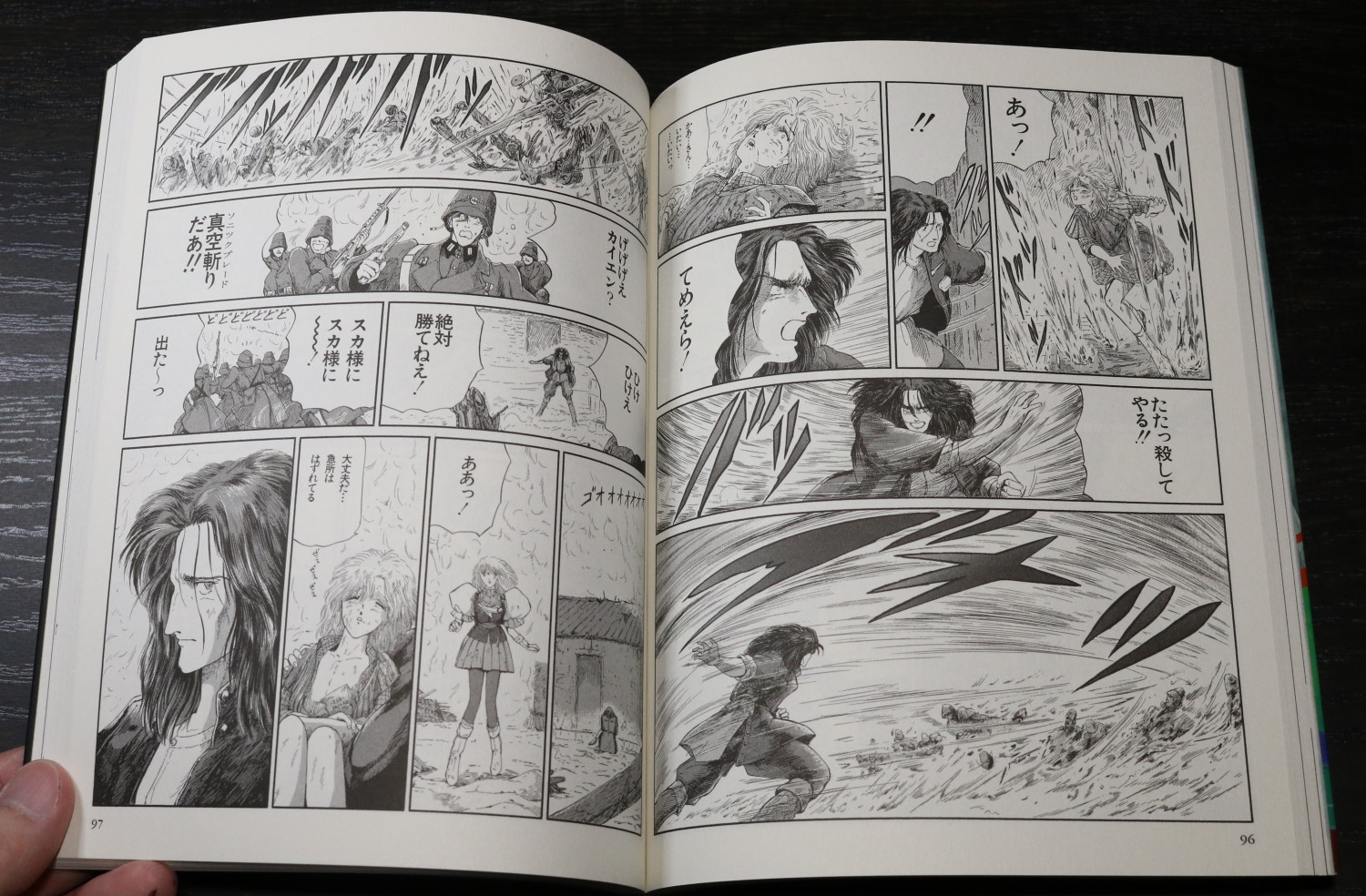
Mr. Nagano’s style is unique. It is a mix of old 80s manga style that has been modernized to a degree. Although …, if you compare his style from volume 1 (1986) with art from volume 16 (2021), his style hardly changed. It’s been mellowed a little but no significant changes.
His variety in art style is very good. He has to be, considering how many characters there are. His art doesn’t tend to shine when colored however. His art is best viewed in its original form, black & white.
Mortar headds / GTM
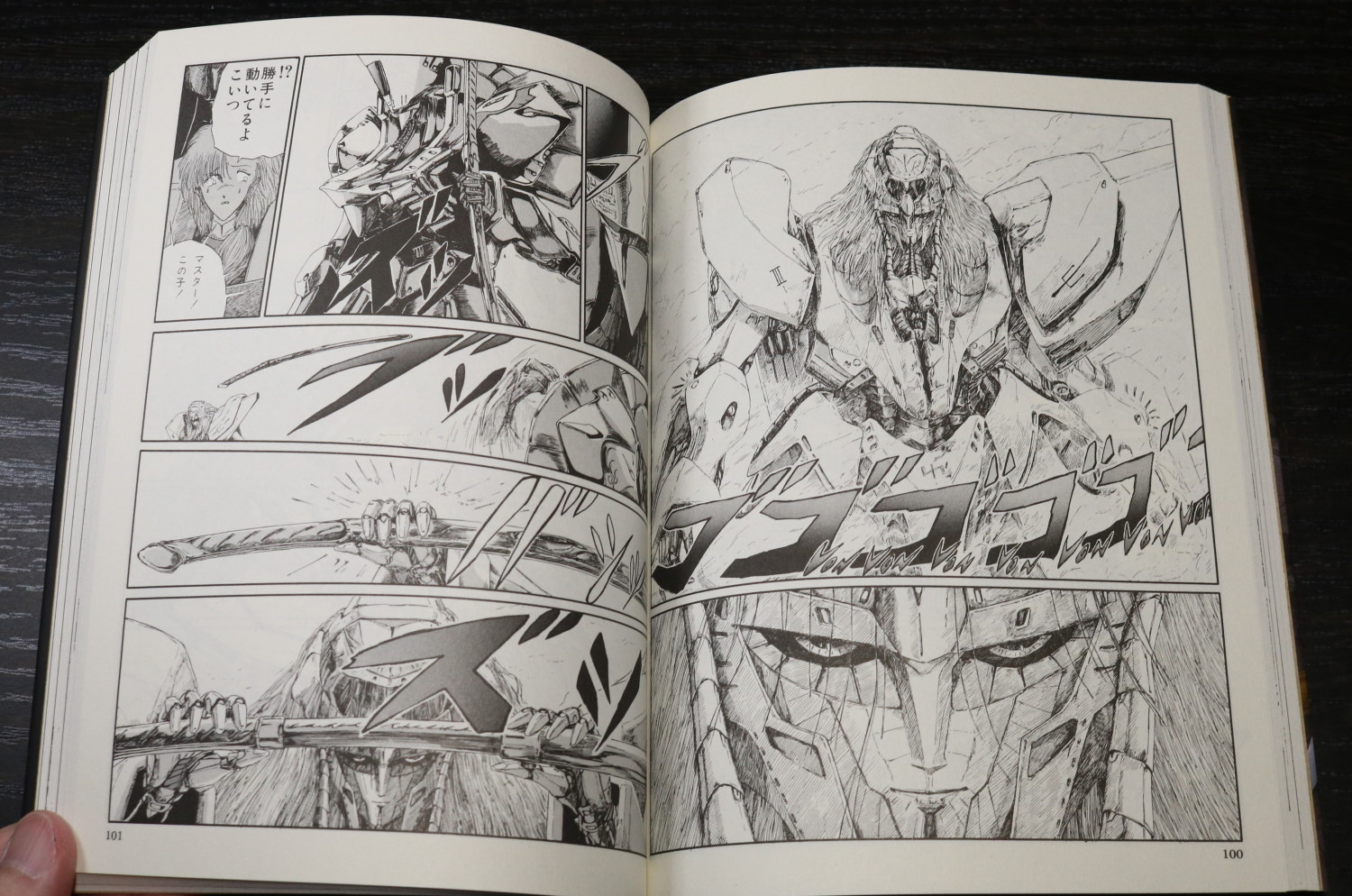
A mortar headd is basically a giant robot. This manga features tens of unique designs, and they appear to be quite popular among Japanese modelers. Their appearance and how they function are fundamentally somewhat similar to the ones you see in Evangelion.
They are semi-sentient. Their intelligence level appears to be on par with that of a toddler. It is a fatima’s job to calm them down during battles and so on. Some fatimas go as far as having a virtual intercourse with them to spur them up.
They cannot move on their own and need at least either a fatima or a headliner to be able to function. Both are required for 100% functionality.
Overall, they are something of a mystery.
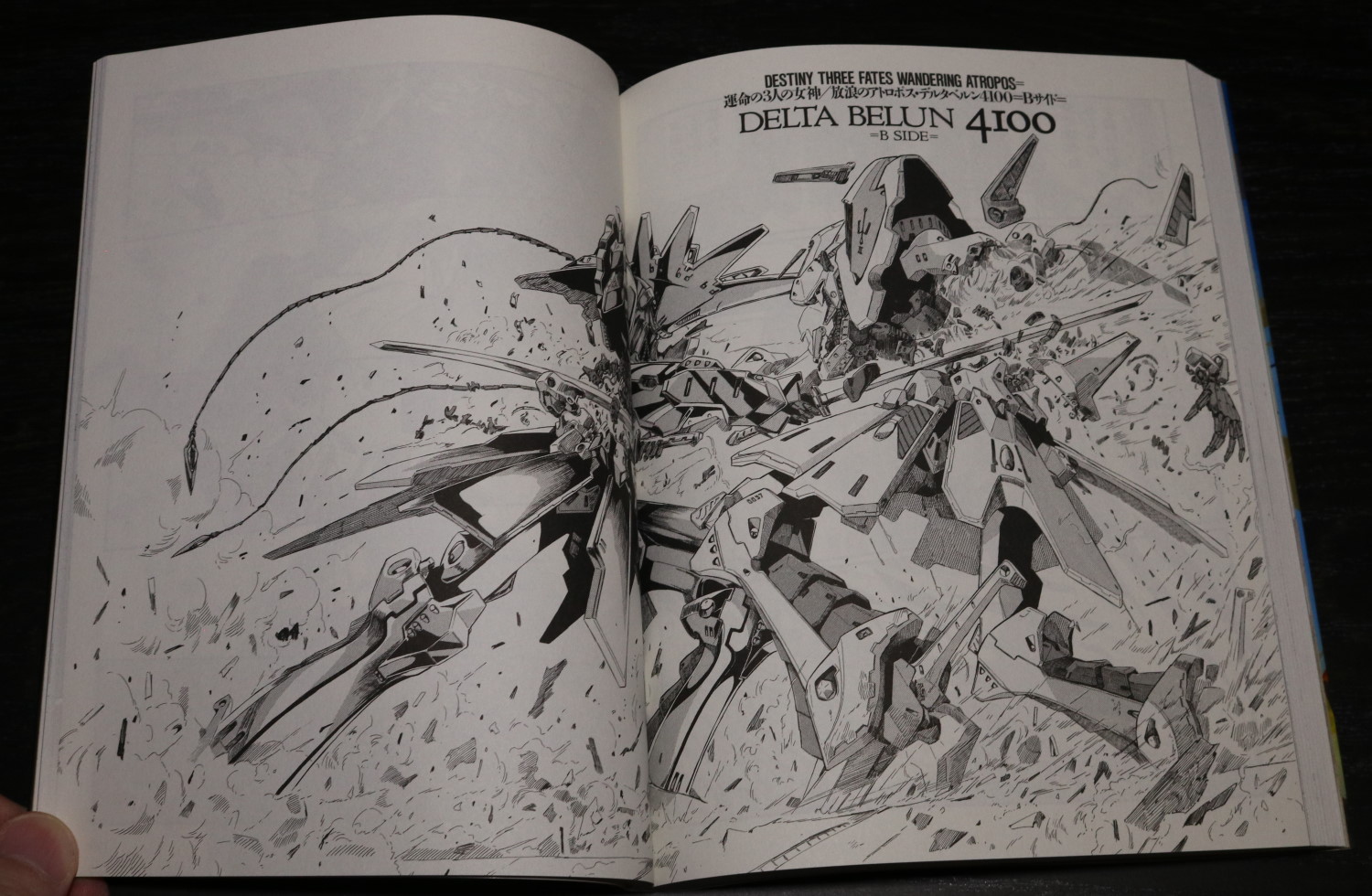
The term, Mortar headd, is replaced with a new term, GTM (Gothic Maiden) in volume 13.
Headliners / Divers
I’d personally call them hyper humans. They are basically humans with far superior speed and power. Such abilities are required to pilot mortar headds.
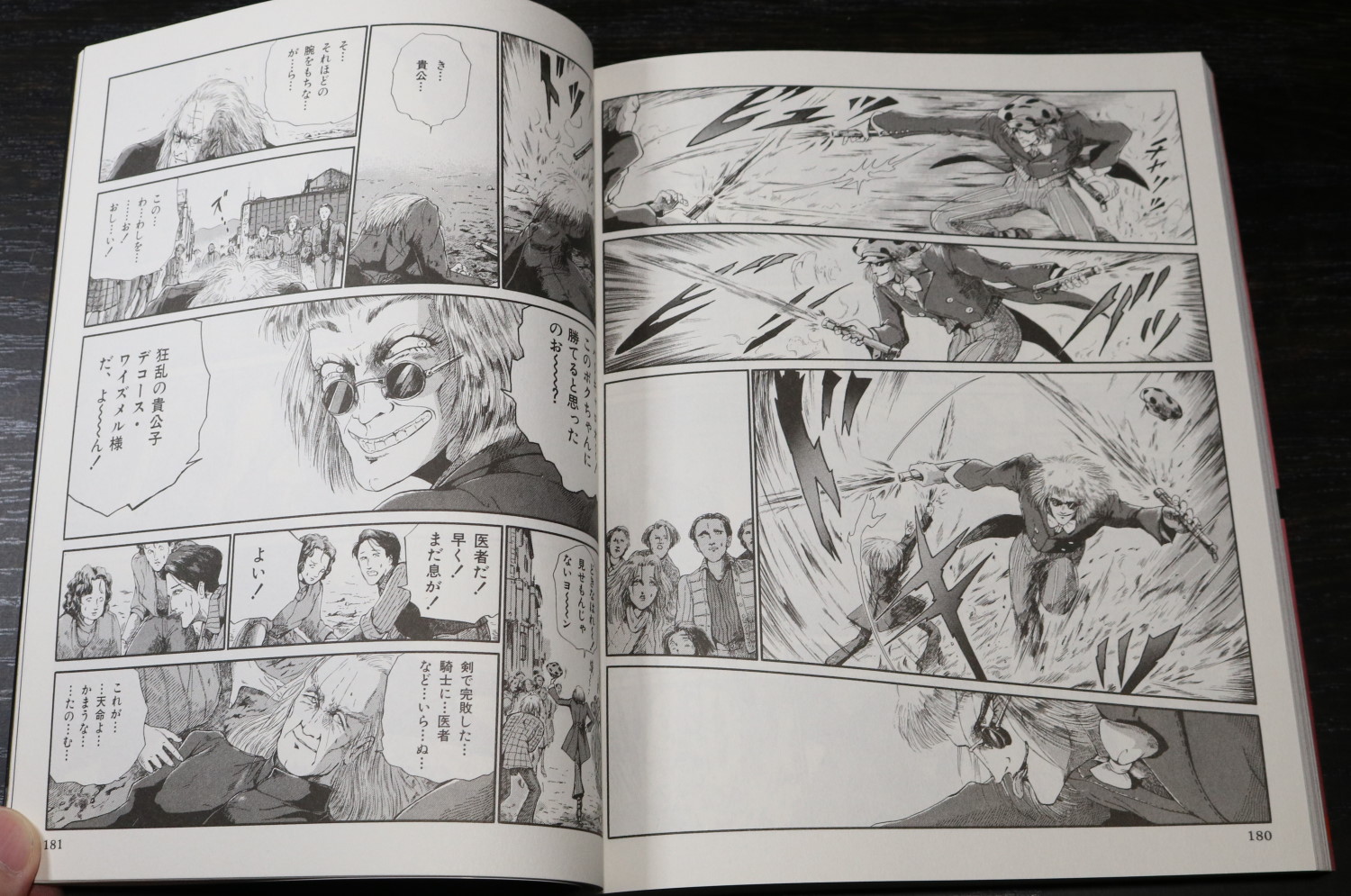
Divers are basically ESPs. Headliners have the muscles. Divers have the mind powers. Both are capable of driving mortar headds although, the most of time, it’s headliners.
Fatima (Later renamed to AF)
A fatima is a genetically engineered human built to act as a central processor for mortar headds. Basically, their job is to act as the brain between a headliner and a mortar headd. They come in female forms usually, but there are males and child versions.
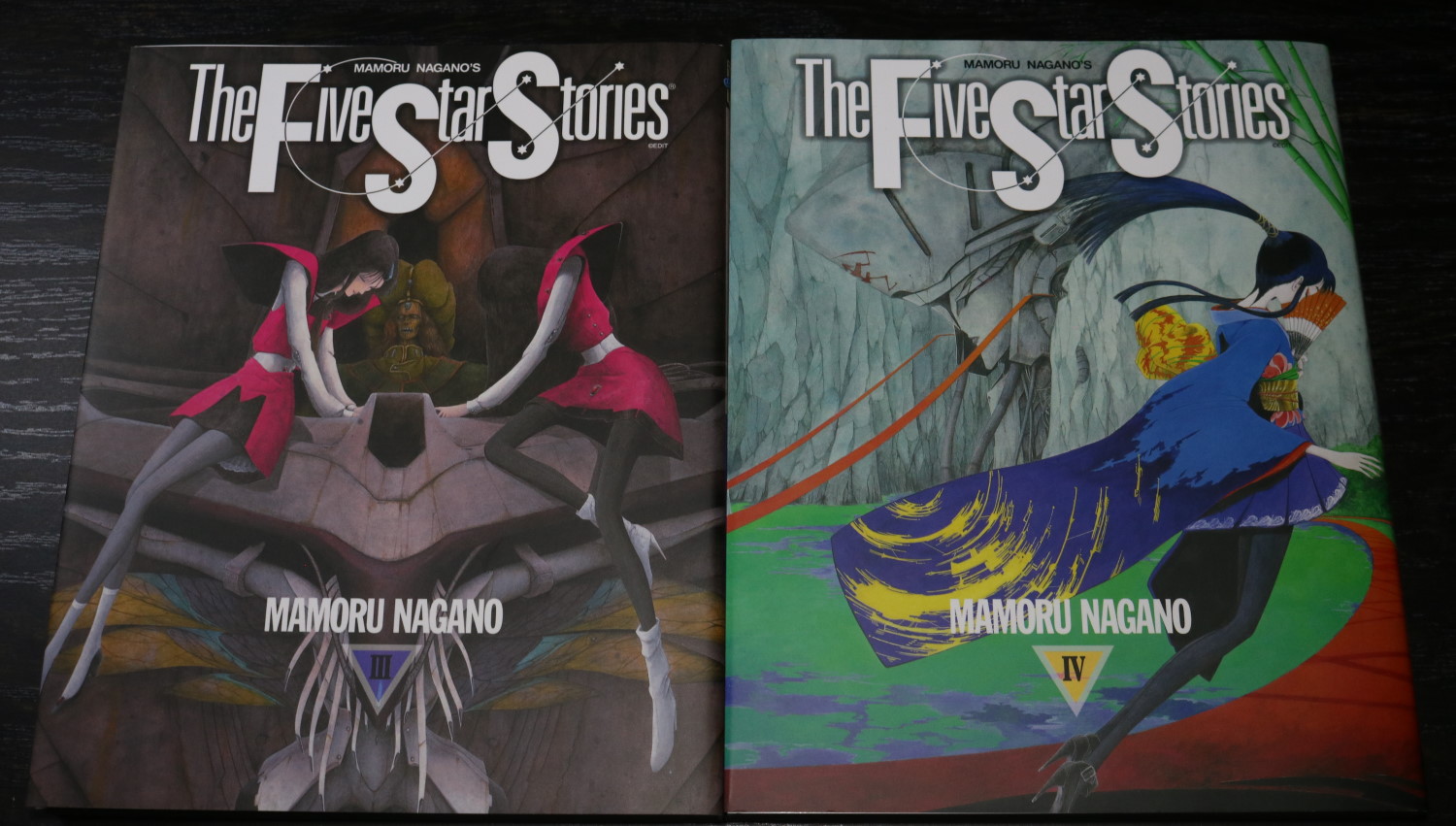
Because of an extremely close bond required between a headliner and a fatima to operate a mortar headd, fatimas frequently act as their masters’ sexual partner. And, because they are genetically engineered and mind-controlled to be submissive and loyal, headliners often fall for them completely, marrying them and even refusing to have a normal wife.
This trend does seem to create an issue within the story where bloodlines dry out due to lack of heirs.
Fatimas cannot reproduce because the laws are in place that they must not reproduce. There are a few exceptions, but 99.9% of fatimas are infertile. This measure is completely understandable.
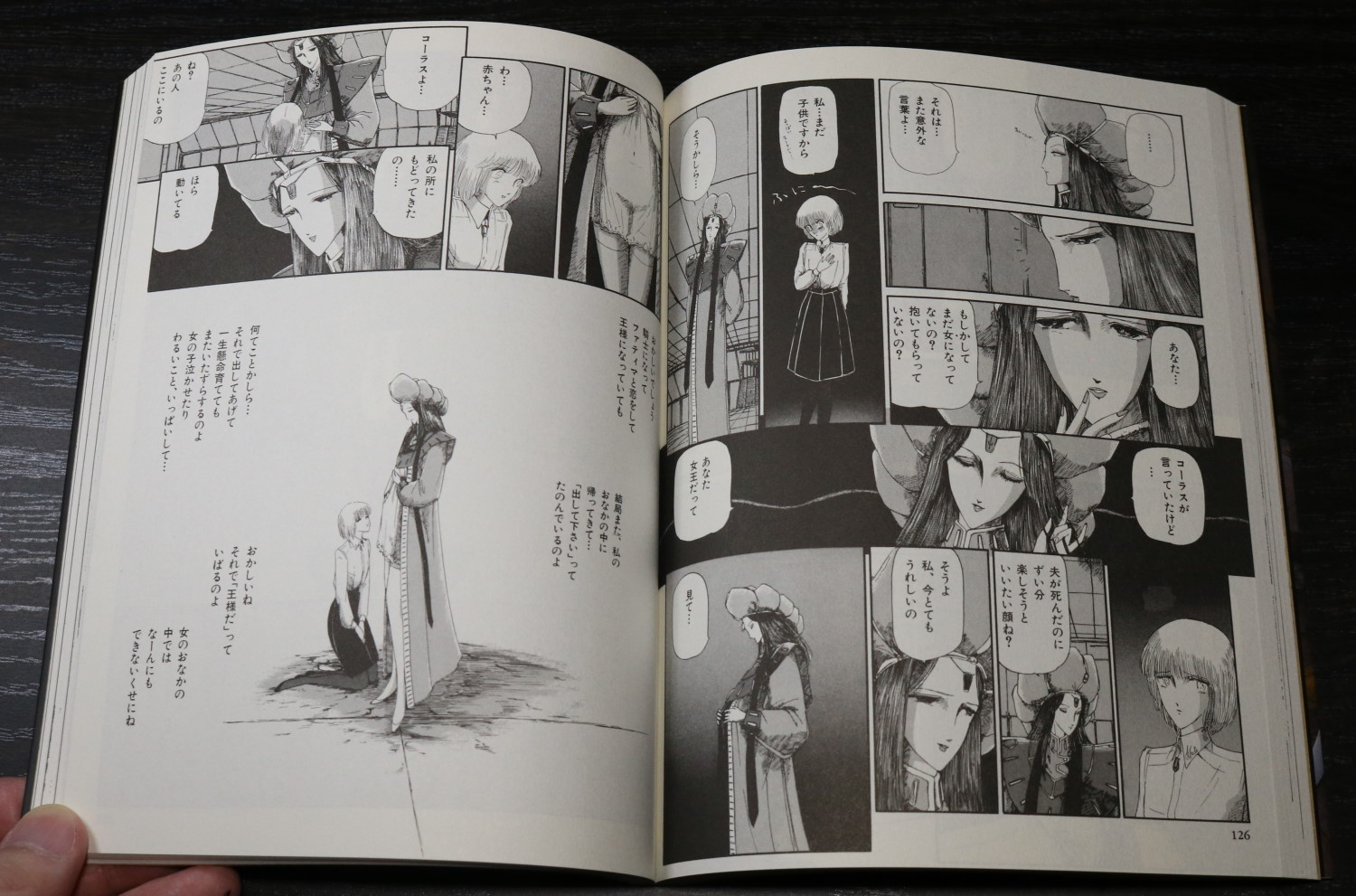
In the manga, it is clearly, but subtly, indicated that natural women feel jealousy toward fatimas who remain young forever and are loved by their partners, usually men. The only advantage natural women have over them is the ability to reproduce. If they lose that advantage, I do think women in F.S.S might end up revolting.
Then we also get to see fatimas’ point of view.

Many of them are sexually as well as physically abused. Due to their mind control, they remain loyal to their masters regardless and they don’t seem to feel anything too wrong with being abused and raped. Again, this is due to their mind control.
They also do have any human rights on their own. Only when they have a master, they obtains human rights which is basically an extension of their master’s rights. If their master dies or gets killed, anyone can kill them or rape them without any repercussions. Fatimas of famous headliners do get to have some rights even after their master’s death but most of them become literal sex toys once left alone.
There are people who sympathize with what fatimas are going through but there aren’t enough of them to make a difference.
For normal men, they are seen as angels and literal sex toys. Fatimas never call ordinary men “master”, and ordinary people cannot afford them anyway, so for the general populace, they remain as something to admire and, sadly, rape if a chance arrives to find them masterless.
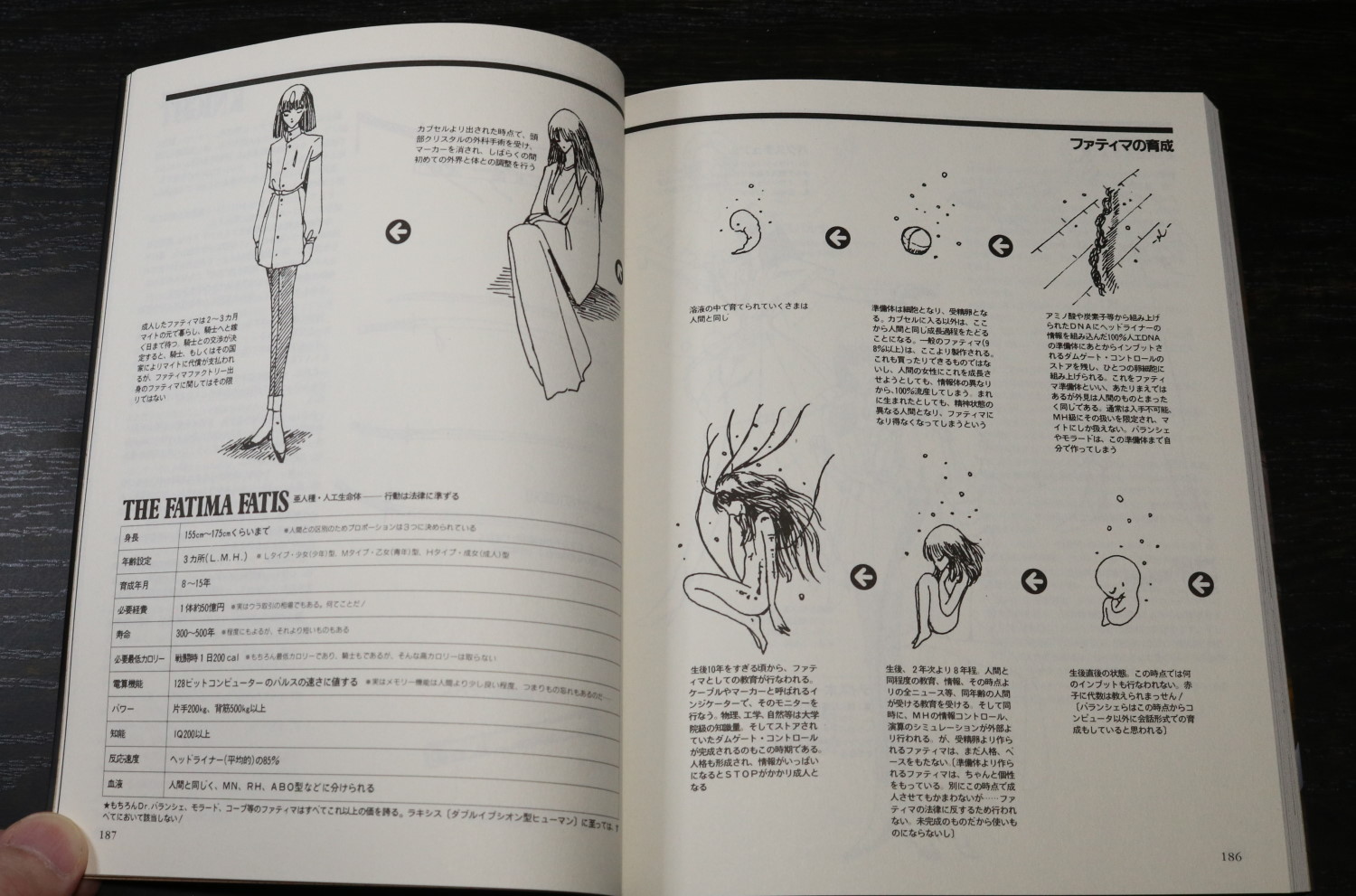
In the end, the story tells us subtly that fatimas are superior human beings and they should be the ones who should lead mankind. Whether that will actually happen remains to be seen. This conflict is one of the major driving forces of FSS although, after volume 12, the message has sort of … altered.
The term, Fatima, is later renamed to AF, Automatic flowers. This happens in volume 13.
From volume 1 to 12, and 13+

The author’s story telling focus and style alters significantly after volume 12. Now, I will remind you that this series has been going on for 35+ years. It’s a long series. It may have “only” 16 volumes so far, but each book is around 250 pages, meaning content wise there are about 20 volumes worth of stuff.
Before volume 13, the stories of volume 1 ~ 12 are heavily fragmented and there are a lot of foreshadowing with little actual story progression. Starting with volume 13, it is a lot easier to digest where the stories are going. It’s just a lot easier to read.
It is my take that volume 1 to 12 can be seen as the stories of generation 1 characters. Stories from volume 13 and later are for generation 2. A significant difference between the two is, well, mortality rate.

Characters from gen 1 often get killed too easily and often too quickly. Some seemingly important characters die as soon as they are introduced. Amid the chaos that is generation 1, we see births of new characters who are the foundation of generation 2.
Morality rate of generation 2 characters is very low. Characters no longer die left and right. They still get hurt but none dies.
Additionally, the mood from volume 13 and onward is mellow. It feels positive and bright which is a stark contrast from previous volumes.
I feel something happened personally to the author between volume 12 and 13. Volume 13 is also where two major terminologies, fatima and mortar headds, are replaced with AF and GTM respectively.
Interestingly, volume 12 was released in 2006 and volume 13 was released in 2015. There was a 9-year gap. The author’s usual pace has been 3 years for a release.
Other versions and availability
There appears to be an English version that is badly lagging behind and there is a Korean version that is up to date.
It’s interesting to note that I was able to purchase Japanese F.S.S. with ease from Amazon Japan. All volumes are in stock proper. Even out of stock volumes appear to be restocked quickly.
That means two things. One, the author is making sure that all volumes are in stock always. Two, there is a steady demand for the series that the publisher is making sure that they remain in stock. I am leaning to the latter.
Now, there is indeed an English version. According to what I’ve read, the author put in the bill for the translation, meaning the English version is more of a vanity project for the author.
Additionally, Japanese F.S.S. volume 1 covers English version volume 1 and 2. Basically, each Japanese version volume is divided into half. It seems no reprint has ever been made, making English version is rare, thus expensive to acquire. A quick Ebay search reveals that each volume costs about 35 CAD. Since an English volume is about a half of a Japanese one, you are looking at 70 CAD for a book essentially.
English version covers up to Japanese volume 10.
Finally, there appears to be a Korean version that is fully up to date. My search reveals that Korean version has also very good availability, meaning early volumes are in stock proper.
What I am seeing here is that there is an unwaning fanbase in Japan and Korea.
Interestingly, F.S.S. is hard to pirate. There is no digital version. There IS a scan of English version on the internet but it’s very low res and hurts your eyes more than anything else. Besides, the English version covers up to volume 10 only.
So, your only choice is learn either Japanese or Korean, whichever is easier for you, and purchase the books. You really want to read the second generation stories because it sheds so much more light on events. My all time favorite volume has been 14th where Sopp partakes in a losing war and makes them win. Volume 15 sheds light on GTM. Volume 16 sheds light on Lachesis’ future.
So, yes, you do need to read those volumes. To be honest, volume 1 to 12 is really nothing. It hardly reveals anything and just so many characters die. It’s volume 13 and later that’s really worth reading.
Conclusion
This series has a really, really, unique charm that isn’t seen anywhere else. This is a one of a kind and it is a masterpiece.

One aspect that stands out the most is the sheer amount of lore. It’s clear that the author has created his own world and has spent years shaping it. The author even covers what kind of food people eat. Different culture, different food.
Another aspect that stands out is that the author takes a neutral view on characters, meaning there is no clear villain in the story. There are antagonists in the story, but the author covers them well enough to a point that we, the readers, understand why they are doing what they are doing.
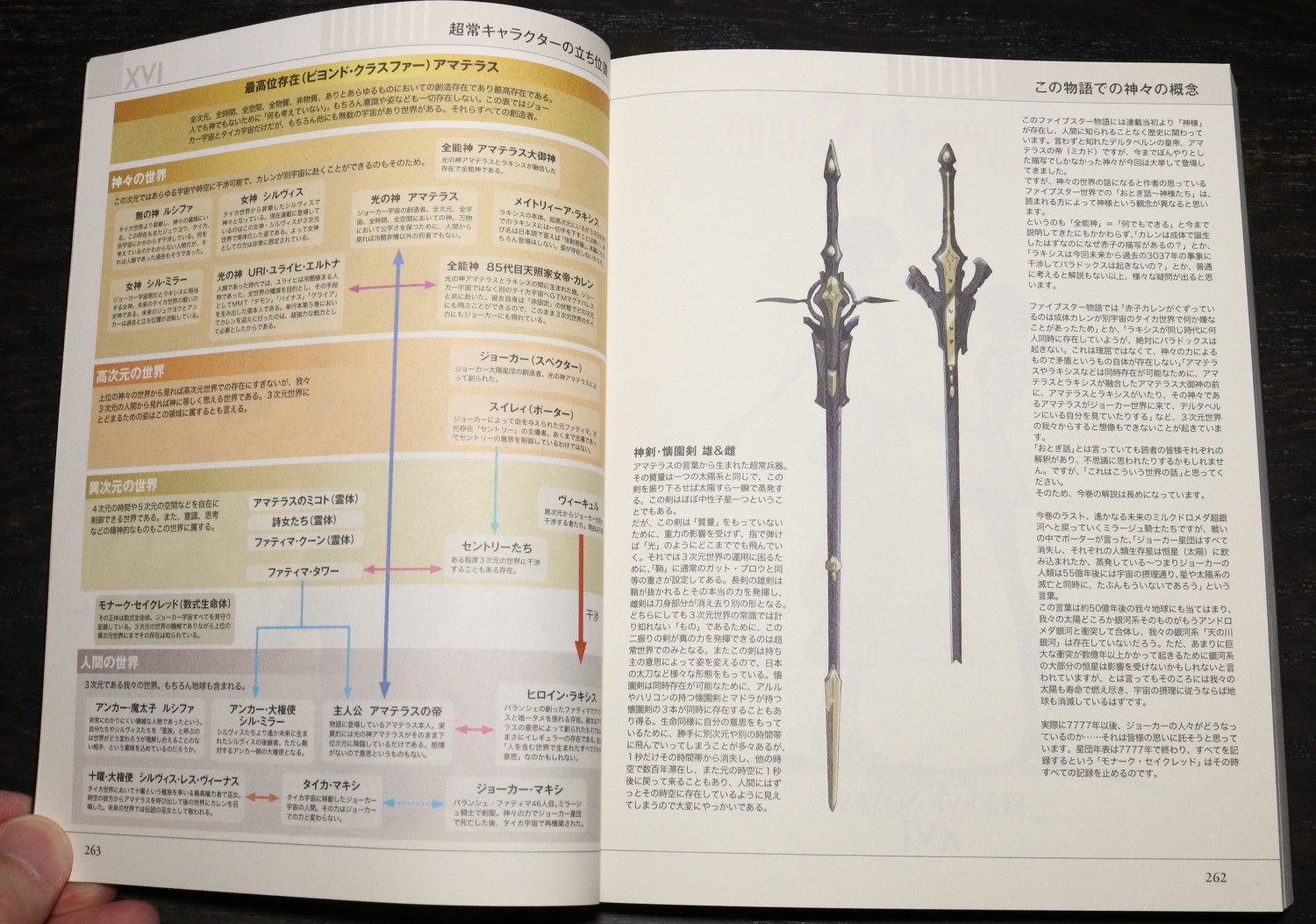
Yes, the story can be brutal. Characters die. Children die. Women are raped. But, as a war-ridden era which this story sets itself in, that is unfortunately natural.
You will be required to read this more than once because there is absolutely no way you will understand the story at once. There are so many characters with so many twists. Thankfully, this manga does not need to be read in order due to its unique structure.
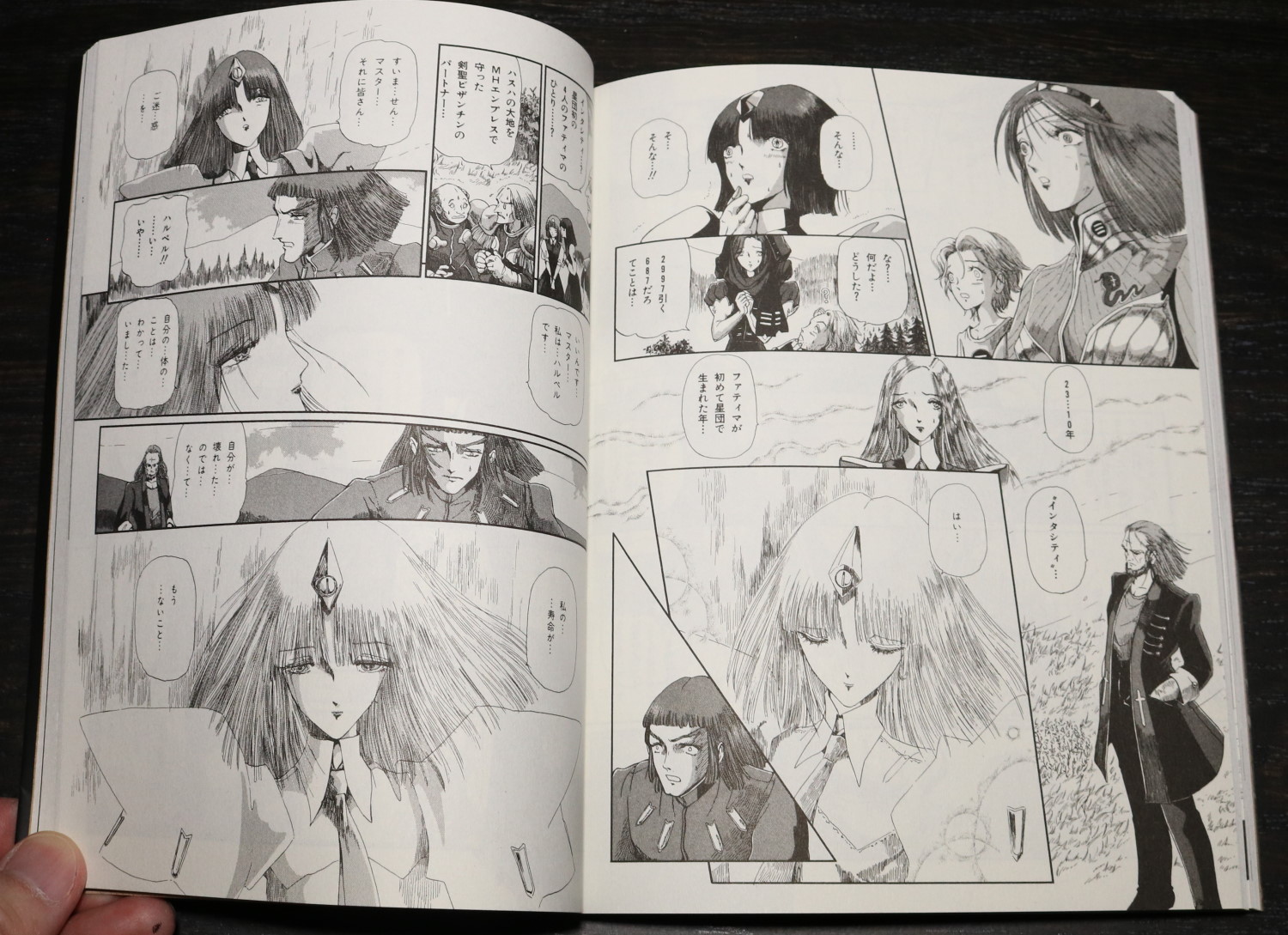
For an example, volume 1 can be read much later. You can start with volume 2 and won’t have any issue understanding the overall story flow. The stories are told in arcs. Each arc provides you with a piece of a puzzle. It does not matter which order you obtain the puzzle pieces as long as you get them. You can even start with volume 16 and go backwards.
It is entirely up to you how you put together the puzzle pieces.
So, yeah, this manga is very unique. It won’t be an easy reading for you. You have to fire up your brain and try to understand to get going. You need to invest to understand. Basically, not an easy manga to read, but I feel the reward is worth it.
Until next time.

